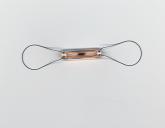News

EXPERT ANALYSIS FROM THE HFSA ANNUAL SCIENTIFIC MEETING
LAS VEGAS – Clinical roll-out of a recently approved first-in-class implantable pulmonary artery measurement device ushers in a true breakthrough in the management of heart failure patients, experts forecast at the annual meeting of the Heart Failure Society of America.
Noting that in the pivotal phase III CHAMPION trial the use of the wireless implantable CardioMEMS system reduced heart failure–related admissions by 37% with a number needed to treat of just four patients for 1 year in order to avoid one hospitalization, Dr. Phillip B. Adamson declared, “It shifts us from a strategy of crisis management to one of stability management.”
Earlier this year, the Food and Drug Administration approved the implantable pulmonary artery measurement system for use in patients with New York Heart Association class III heart failure and a heart failure–related hospitalization within the previous 12 months, which defined the study population in the 550-patient randomized, single-blind, pivotal CHAMPION trial. The study included patients with heart failure with preserved ejection fraction (HFpEF) as well as those with reduced ejection fraction (HFrEF). Notably, the intervention was at least as effective in HFpEF as HFrEF.
“We saw roughly a 50% reduction in heart failure hospitalizations with a number needed to treat of two in order to prevent one hospitalization in patients with HFpEF. That’s a pretty profound result in a population of patients for which there’s been no strategy to keep them well and out of hospital,” observed Dr. Adamson, medical director of the Heart Failure Institute at Oklahoma Heart Hospital, Oklahoma City.
The 6-month results of CHAMPION have been published (Lancet 2011;377:658-66). At the heart failure meeting, Dr. Adamson and Dr. William T. Abraham presented updated results of the extended longitudinal analysis of CHAMPION. While heart failure hospitalizations were reduced by 28% during the first 6 months of the study in patients with the device turned on as compared to controls with the device off, the magnitude of benefit grew over time such that for months 6-18 in the randomized phase of the study, the relative risk reduction increased to 45%.
“It looks like we all got better over time at using this pulmonary artery pressure information,” observed Dr. Abraham, professor of internal medicine and physiology and cell biology and director of the division of cardiovascular medicine at Ohio State University, Columbus.
He drew particular attention to the highly significant 16% reduction in the risk of the combined secondary endpoint of death or all-cause hospitalization with the device on over the full duration of the randomized study; that’s an outcome many current standard-of-care pharmacologic and device therapies haven’t been able to achieve.
When former control subjects were crossed over to device-on for 13 months of open-label management, their annualized rate of heart failure hospitalizations dropped by 48%, he continued.
The principle behind this management strategy is that measurable changes in pulmonary artery pressures occur at least several weeks before patients experience symptomatic deterioration and weight gain. And these pressure changes are actionable. By remotely monitoring hemodynamic pressures via the implanted device and promptly adjusting medications in order bring elevated pressures back into target range – for example, to a mean arterial pressure of 10-25 mm Hg – heart failure hospitalizations are avoided.
“In CHAMPION, even if the patient looked good and felt good, if the pressures were elevated the protocol required that they be lowered to target ranges,” Dr. Abraham explained.
The system works like this: On a daily basis, a patient lies down on a special pillow that interrogates the device for 18 seconds, then transmits the pressure readings to an Internet website. If the readings fall outside target range, an e-mail notification is automatically sent to the patient’s health care provider. Once the office receives the message then a nurse, nurse practitioner, or physician assistant phones the patient and adjusts medications according to a defined protocol based on scripted questions.
On the other hand, if the patient’s pressures are stable, once-weekly review of the readings is generally sufficient. That was the protocol in CHAMPION.
“Patients don’t decompensate overnight,” Dr. Abraham observed. “They decompensate over many days to weeks.”
Audience members had lots of questions about billing. Dr. Adamson explained that remote pulmonary artery pressure monitoring is billable every 31 days, although a physician can’t bill for both pulmonary artery pressure and impedance monitoring.
“You have to have a documented encounter in the patient’s chart in which you reviewed the pressures and what your decision-making process was: either the patient was contacted and the medications increased, or you decided not to change the medications,” he said.


